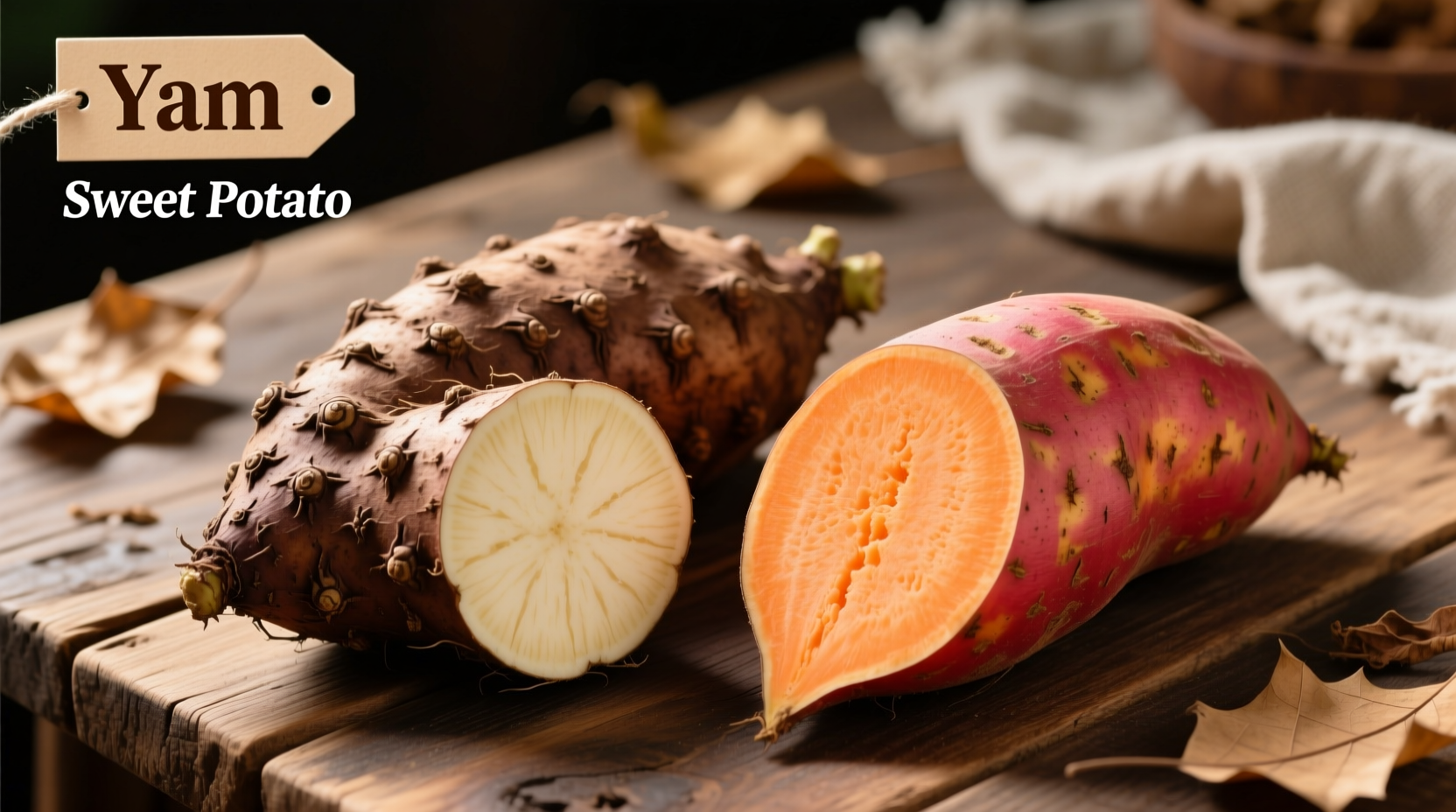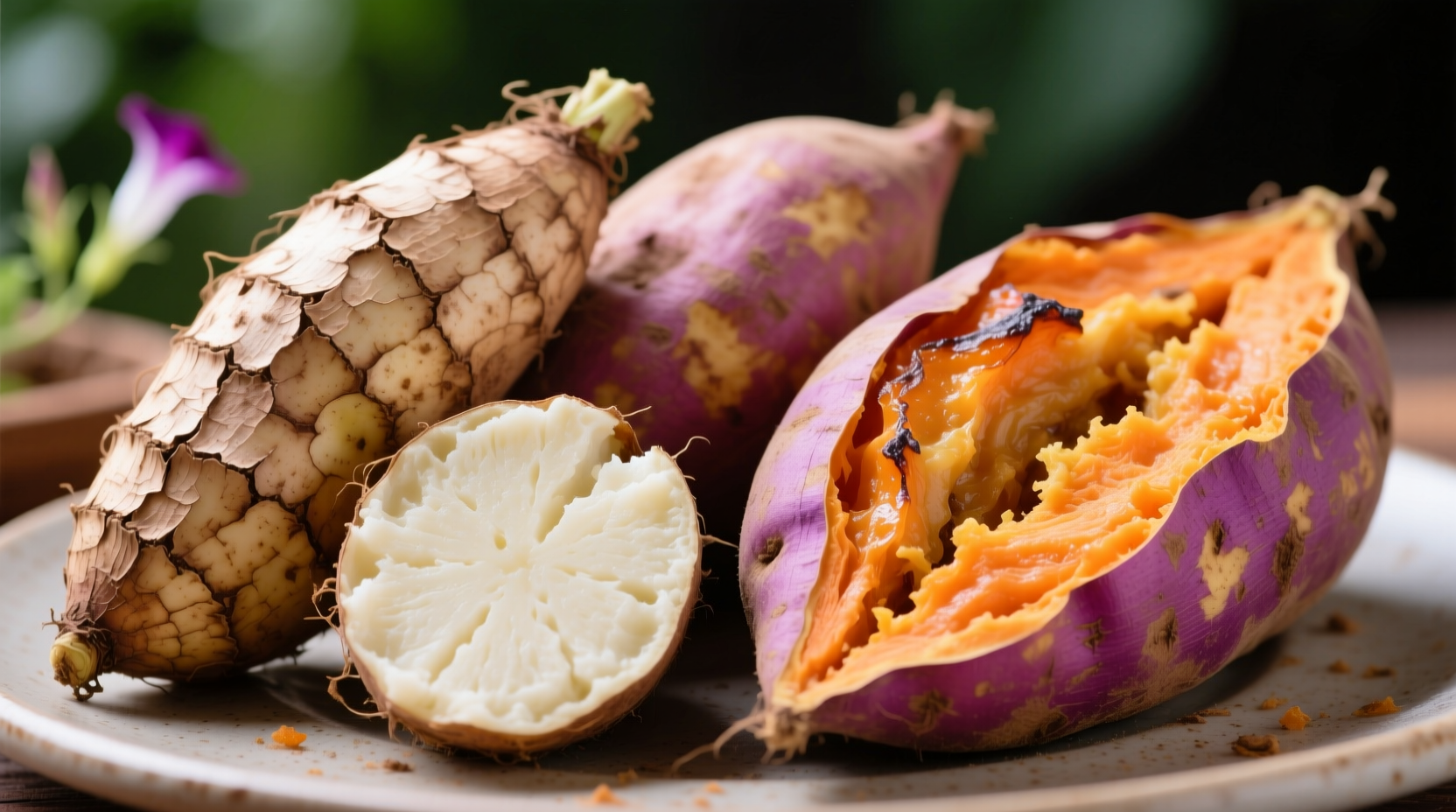Ever stood in the produce aisle wondering why some "yams" have orange flesh while others are pale? You're not alone. This widespread confusion affects millions of shoppers who mistakenly believe yams and sweet potatoes are interchangeable. Understanding the real differences matters for both culinary success and nutritional awareness.
Botanical Origins: Two Completely Different Plants
Despite their similar appearance in stores, yams and sweet potatoes have entirely separate botanical lineages. True yams (Dioscorea genus) belong to the Dioscoreaceae family and originated in Africa and Asia. Sweet potatoes (Ipomoea batatas) are part of the Convolvulaceae (morning glory) family and trace their roots to Central and South America.
The confusion began in the United States when orange-fleshed sweet potatoes were introduced commercially. To distinguish them from traditional white-fleshed varieties, marketers borrowed the African term "nyami" for the new cultivars. This historical mislabeling persists today, creating ongoing consumer confusion.
| Characteristic | True Yam | Sweet Potato |
|---|---|---|
| Scientific Family | Dioscoreaceae | Convolvulaceae |
| Origin | Africa/Asia | Central/South America |
| Texture | Starchy, dry | Moist, sweet |
| Skin Appearance | Bark-like, rough | Smooth, thin |
| Flesh Color | White/purple | Orange/white/purple |
How to Identify Them in Grocery Stores
In the United States, what's labeled as "yam" is almost always a sweet potato variety. The USDA actually requires labels distinguishing sweet potatoes from true yams. When shopping:
- True yams (rare in mainstream US stores) have dark, bark-like skin and white or purple flesh
- Orange-fleshed sweet potatoes are often mislabeled as yams but are actually cultivars like 'Beauregard' or 'Jewel'
- White-fleshed varieties like 'O'Henry' are correctly labeled as sweet potatoes
According to agricultural research from Louisiana State University's AgCenter, over 95% of products labeled as yams in American supermarkets are actually sweet potatoes. True yams require specialty markets catering to African, Caribbean, or Asian communities.

Nutritional Differences That Matter
While both provide valuable nutrients, their nutritional profiles differ significantly. Data from the USDA FoodData Central shows:
- Sweet potatoes contain nearly 400% of your daily vitamin A needs per serving, while yams provide minimal amounts
- Yams have higher carbohydrate content (approximately 28g per 100g vs 20g for sweet potatoes)
- Sweet potatoes have more dietary fiber and vitamin C
- Yams contain more potassium but less overall micronutrient diversity
These differences impact both health benefits and culinary applications. Sweet potatoes' higher sugar content makes them ideal for roasting and baking, while yams' starchier composition suits boiling and mashing in traditional West African dishes.
Practical Cooking Guidance
Understanding these differences transforms your cooking results:
- For baking or roasting: Choose orange-fleshed sweet potatoes (marketed as yams) for caramelization
- For traditional African dishes: Seek true yams at specialty markets for authentic texture
- Substitution warning: Using sweet potatoes in place of true yams changes moisture content significantly
- Storage tip: Sweet potatoes last 3-5 weeks at room temperature; true yams require cooler storage
Chef Maya Gonzalez notes: "In Caribbean cooking, substituting sweet potatoes for true yams creates a completely different dish texture. The starch composition affects how the ingredients absorb flavors and hold together in stews."
Global Perspective on the Confusion
The mislabeling issue is primarily an American phenomenon. In most countries, including those where yams are staple crops, the terms remain distinct. Nigeria, the world's largest yam producer, grows over 50 million tons annually of true yams, while sweet potatoes represent a separate crop category.
According to the Food and Agriculture Organization of the United Nations, global yam production centers in West Africa's "yam belt" (Nigeria, Ghana, Benin), while sweet potato cultivation spans tropical and temperate regions worldwide. This geographical separation further underscores their botanical distinction.











 浙公网安备
33010002000092号
浙公网安备
33010002000092号 浙B2-20120091-4
浙B2-20120091-4